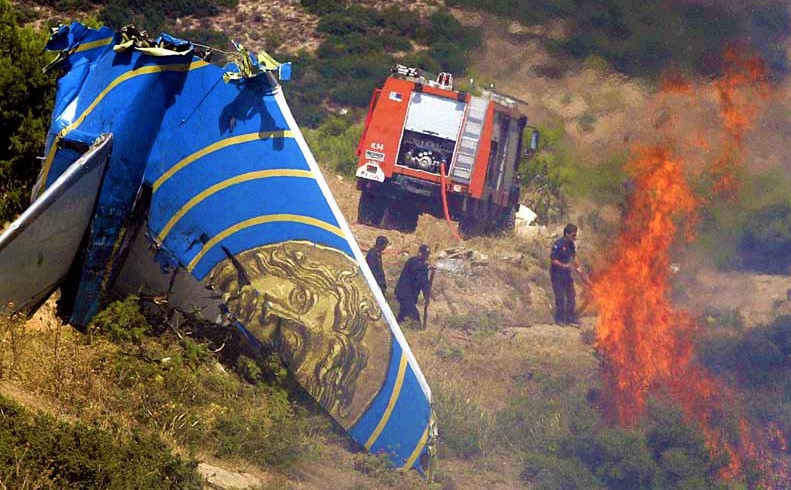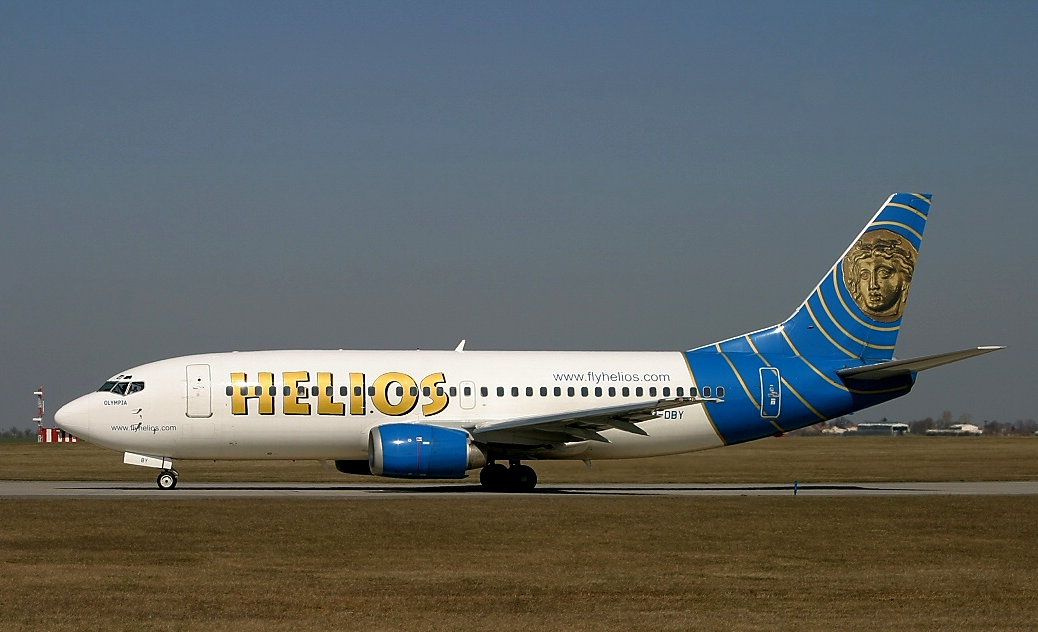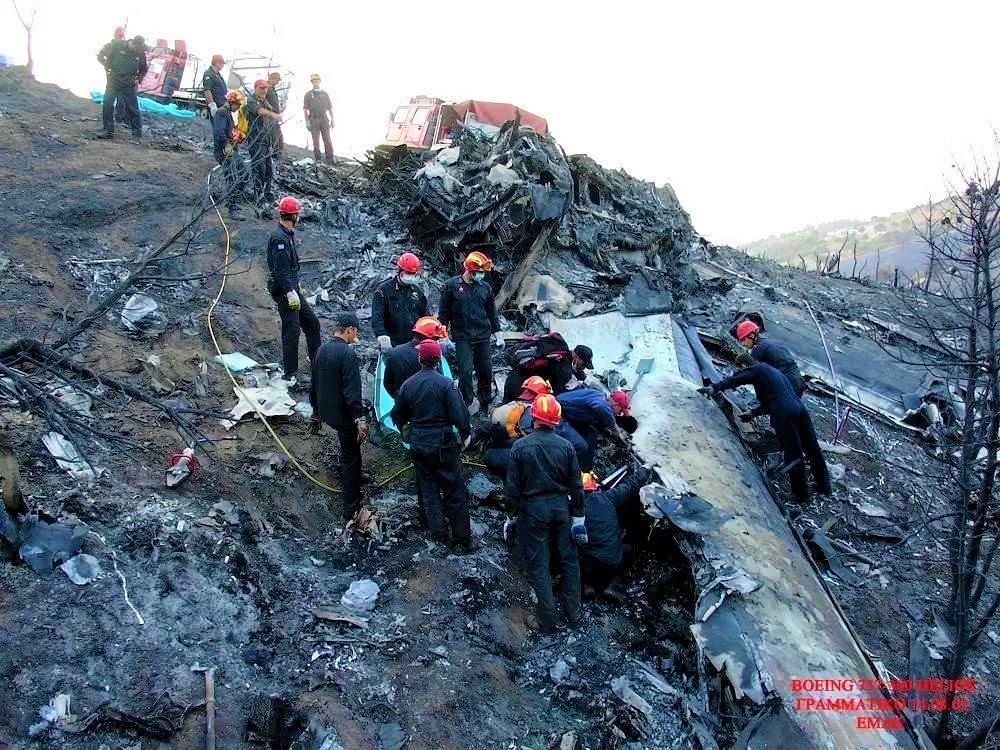


The Hellenic Air Accident Investigation and Aviation Safety Board (AAIASB) concluded that below chain of events became the reason of the this Fatal accident.
► Non-recognition by the pilots that the pressurization system was set to "manual",
► Non-identification by the crew of the true nature of the problem,
► Incapacitation of the crew due to hypoxia,
► Eventual fuel starvation,
► Impact with the ground.
The Boeing B737-31S aircraft belonged to the Helios Airways and unfortunate journey was Flight 522 on 14 August 2005 that crashed Killing all 121 passengers and crew on board near Grammatiko, Greece.
On that day ,the aircraft was flying from 'Larnaca, Cyprus' to 'Prague, Czech Republic' , with a scheduled stopover at 'Athens, Greece', but that crashed on 14th August 2005, killing all 121 passengers and crew on board due to Hypoxia induced Crew incapacitation and Fuel Run out.
The accident aircraft 'Olympia' , registered as 5B-DBY arrived at Larnaca International Airport with a PIREP (Pilot Report) of "frozen door seal, and abnormal noises coming from the right aft service door" .

By Alan Lebeda - http://www.airliners.net/photo/Helios-Airways/Boeing-737
The Ground engineer carried out inspection and performed a pressurization leak check using "manual mode" without the engines. At the end of the check , the engineer failed to reset it to "auto" on completion of the test.
Cockpit crew also failed to notice the "Pressurization mode change" at numerous occasions and continued with the take off after the aircraft was declared serviceable.
As the aircraft climbed with the manual mode, the pressure inside the cabin gradually decreased, and at an altitude of 12,040 feet, the cabin altitude warning horn sounded.
This was the time, when the Cockpit crew could have stopped the climb , but they ignored the warning assuming it as a "take-off configuration warning".

Overhead panel in the cockpit mushroomed with multiple warning lights in the next few minutes. illuminated. Equipment cooling warning lights came on to indicate low airflow through the cooling fans (a result of the decreased air density), accompanied by the master caution light.
The passenger oxygen light illuminated when, at an altitude of approximately 18,000 feet, the oxygen masks in the passenger cabin automatically deployed.
The captain contacted the Helios operations centre and reported "the take-off configuration warning on" and "cooling equipment normal and alternate off line.
He also spoke to the ground engineer, complaining about the "cooling ventilation fan lights were off. The engineer (the one who had conducted the pressurization leak check) asked: "Can you confirm that the pressurization panel is set to AUTO?"
However, the captain, under the influence of hypoxia's initial symptoms, disregarded the question, and instead asked in reply, "Where are my equipment cooling circuit breakers ? . No further Communication could be made with the aircraft.
Hypoxia is a condition where not enough oxygen makes it to the cells and tissues in the body. This can happen even though blood flow is normal. Hypoxia can lead to many serious, sometimes life-threatening complications.Under influence of Hypoxia, blood oxygen falls below a certain level, you might experience shortness of breath, headache, and confusion or restlessness.
The aircraft continued to climb until FL340, the aircraft passed from Cyprus flight information region (FIR) into Athens FIR, without making contact with Athens ATC.
Nineteen attempts to contact the aircraft were made without a success, the aircraft entered the holding pattern for Athens Airport, at the KEA VOR, still at FL340. With auto-pilot, It remained in the holding pattern for the next 70 minutes.

Two F-16 fighter aircrafts of Greek- Hellenic Air Force intercepting the aircraft jet saw that the first officer was motionless at the controls, and the captain's seat was empty.
Inside the Aircraft ,Flight attendant Andreas Prodromou, who held a UK Commercial Pilot Licence tried to control the aircraft from the Captain's seat while using a portable oxygen supply, but was not qualified to fly the Boeing 737.
Before both the engines flamed out in a succession of 10 minutes, Prodromou succeeded in banking the aircraft away from Athens and towards a rural area. At last , the aircraft crashed into the hills near Grammatiko, killing all 115 passengers and 6 crew on board.
It is considered as the deadliest aviation accident in Greek history.
Pictures : Check Picture for attribution.
